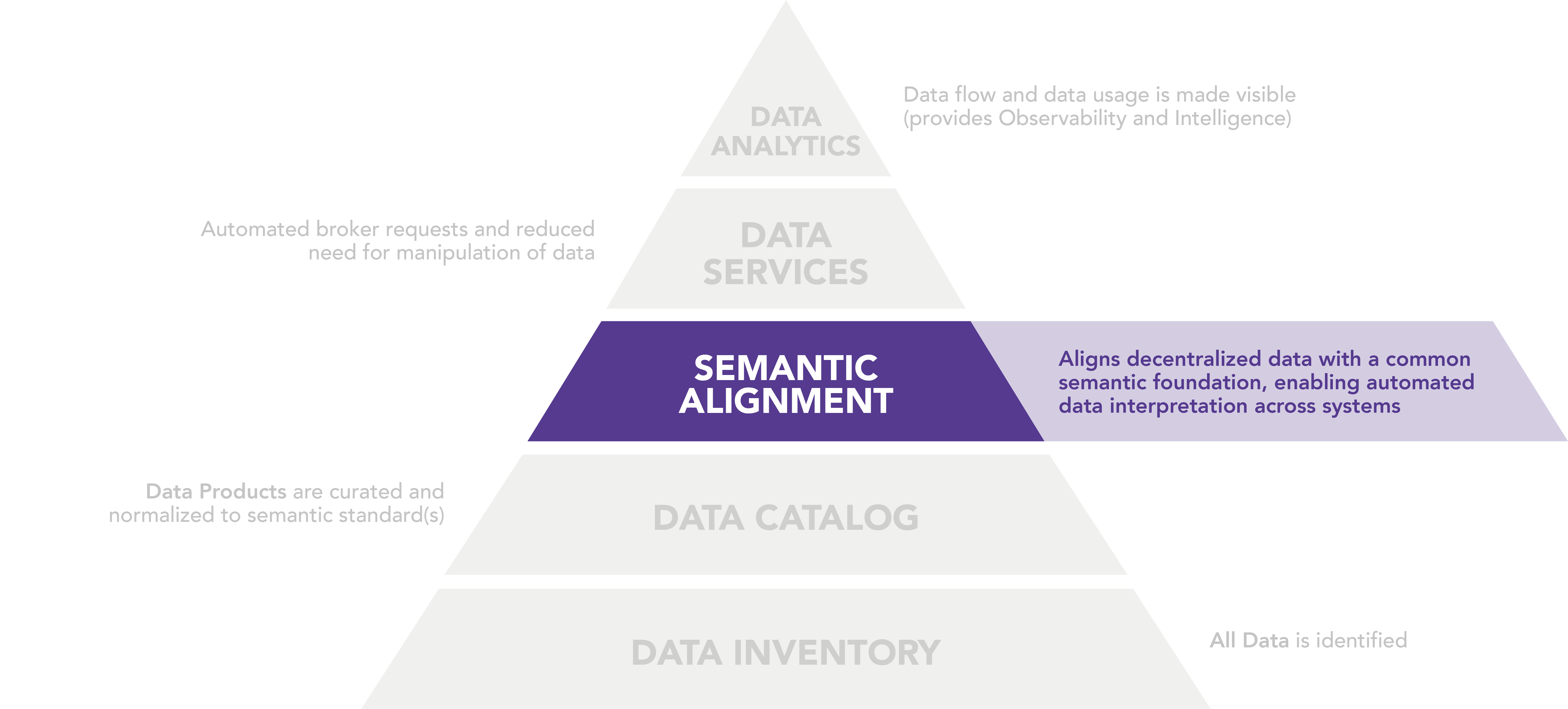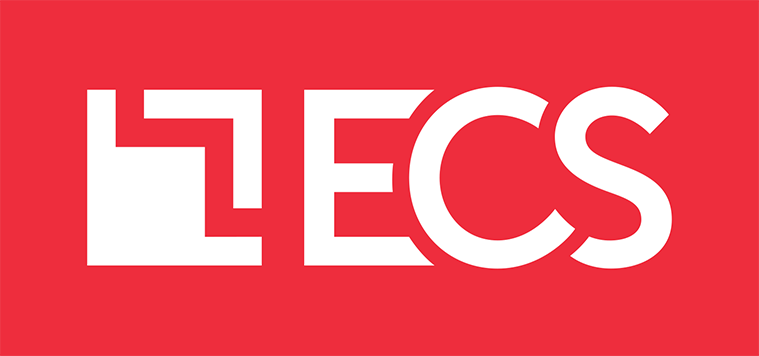By Patrick Elder,
Director of Atlas Product
and Thomas Eldering,
Data Solution Architect
Connecting Data Mesh and Semantics for Seamless Government Data Sharing
Federal agencies face increasing pressure to make data more accessible, transparent, and secure. The Federal Data Strategy (FDS) outlines how to meet that mandate. ECS’ series on the FDS has explored how data mesh architecture supports this mission. Now, we’ll take a deeper dive into a critical component of data mesh: semantic architecture.
Why This Matters: Aligning With the Federal Data Strategy
The FDS mandates improved data management, sharing, and use across all federal agencies. But siloed systems, inconsistent terminology, and manual integration slow down collaboration.
Data mesh, supported by semantic architecture, helps overcome these challenges by:
- Decentralizing ownership.
- Making data discoverable and interoperable.
- Enabling scalable, secure data sharing.
Semantic architecture strengthens data mesh and supports key FDS goals like interoperability, cross-agency sharing, and security, making it easier for federal organizations to treat data as a strategic asset.
Semantic Architecture Is a Core Layer in Data Mesh
“Semantic architecture” refers to a specific approach to organizing and describing data in a way that’s understandable by humans and machines alike. It uses standardized vocabularies (defining what things are) and ontologies (defining how those things relate to one another) to describe data in a way that’s machine-readable and interoperable. This allows data to be shared and reused across different systems and applications, without the need for manual integration or transformation.
As a core layer of data mesh, semantic architecture:
- Aligns decentralized data with a common semantic foundation.
- Reduces manual integration by enabling automated data interpretation across systems.
The Data Mesh Pyramid
Improved by Semantic Architecture

How Semantic Architecture Works
The general approach to implementing semantic architecture rests on three concepts:
SEMANTIC
GLUE
- The standardized vocabularies and ontologies used to describe data.
- They ensure consistent interpretation across different systems and applications.
SEMANTIC
APPROACHES
- The different methods and techniques used to implement semantic architectures, including ontologies, taxonomies, and standardized vocabularies.
- They should promote clarity and reusability.
SEMANTIC
PRINCIPLES
- The underlying principles that guide the development and implementation of semantic architecture (i.e., machine-readability, interoperability, and reusability).
- These should support consistent governance and metadata standards.
How do you put these concepts into action?
The result: you build reusable, interoperable data assets.
A Challenge to Implementing Semantic Architecture…
One of the key challenges in implementing semantic architecture is making “atomic data” (the smallest unit of data that can be processed and shared) unique. That’s important, because for semantic architecture to work, atomic data must be uniquely identified and described using standardized vocabularies and ontologies.
Why is it challenging to make atomic data unique? There are many possible reasons: multiple systems may define the same concepts differently; there may be an absence of universal naming or ID standards; context can change meaning (e.g., “date” could mean birthdate, contract start date, filing deadline, etc.); data granularity can vary across systems; and so on.
This is where ontologies come in. Ontologies describe the meaning of data. They provide a common language for describing data, enabling it to be shared and reused across different systems and applications. One example of this would be leveraging a Canonical Controlled Vocabulary (CCV) to help identify atomic concepts in data and decrease the risk of hallucinations for Large Language Models (LLMs). In fact, ECS is working with multiple agencies, such as the Department of Defense (DoD) and Department of Homeland Security (DHS), to set up a single, government-wide CCV to promote semantic consistency across government.
…and Three Potential Benefits of Implementing Semantic Architecture
Here are three key examples of how implementing semantic architecture enables data sharing and seamless collaboration, which are key to meeting the mandates of the FDS:
1. Connecting Local, Enterprise, and Global Data
- Semantic architecture bridges:
- Local data (department-specific).
- Enterprise data (agency-wide).
- Global data (federal or international collaboration).
- Makes cross-boundary data exchange seamless and efficient.
2. Enabling Government-wide Data Mesh
- Semantic architecture provides the interoperability layer needed for a government-wide mesh.
- Standardized semantics remove the need for one-off integrations.
3. Supporting Secure, Shared Data
- Aligns data access with defined policies (e.g., Security Assertion Markup Language [SAML] semantically describes user identity and access rights across systems).
- Within data mesh, data products must be:
- Semantically aligned – clearly described and standardized.
- Wrapped in security – governed, classified, and protected by design.
- Ensures that shared data remains both usable and secure.
Enabling Government Efficiency and Meeting the Standards of the FDS
Ultimately, a shared semantic layer across government would allow agencies to speak the same “data language,” discover and reuse each other’s data, reduce duplication, and increase trust. Each of these benefits is foundational to fulfilling the FDS goals for transparency, agility, and shared services, as well as improving government efficiency.
How do we get there?
- Start with a shared, standardized, controlled vocabulary.
- Identify and semantically describe atomic data.
- Ensure data products are secure, reusable, and well-documented.
- Collaborate across agencies with common ontologies.
Semantic architecture is the foundation that connects decentralized data under a shared understanding. For federal agencies, it’s not just a technical upgrade, it’s a strategic necessity to meet the standards of the FDS. By embedding semantics into data mesh, agencies can break silos, boost collaboration, and deliver data that’s findable, usable, and trustworthy.






